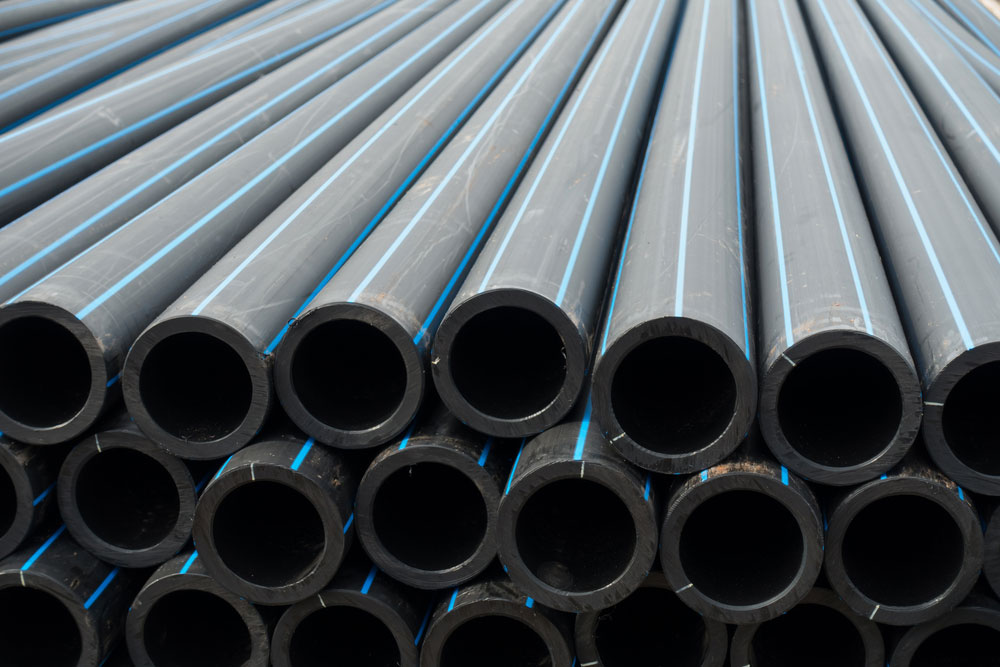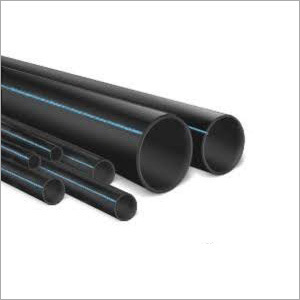Critical Benefits of custom hdpe pipe manufacturing Midland TX for Tailored Performance
Check Out the Manufacturing Process Behind High-Quality HDPE Pipeline and Its Applications
The manufacturing process of top notch HDPE pipes is complex and systematic. It begins with the choice of resources that boost efficiency. Following this, ethylene goes through polymerization to form material, which is then shaped via extrusion. Quality assurance is critical, making sure that the final product satisfies rigid requirements. The journey of HDPE pipes does not end with manufacturing. Their applications across different sectors reveal a wider relevance worth taking a look at.
Recognizing HDPE: Features and Advantages

High-density polyethylene (HDPE) is a functional thermoplastic known for its longevity and resistance to different ecological aspects. This material displays outstanding tensile stamina, making it suitable for requiring applications. Its low-density framework contributes to a lightweight item, promoting simplicity of handling and installation. HDPE also showcases remarkable resistance to chemicals, which minimizes destruction when subjected to severe compounds.
The material's low dampness absorption better enhances its long life, making it ideal for usage in pipes and storage containers. In addition, HDPE is immune to ultraviolet (UV) radiation, making certain that products preserve their honesty even when subjected to sunshine. Its adaptability allows for the creation of elaborate forms without endangering stamina. The environment-friendly nature of HDPE, often stemmed from recycled materials, includes in its allure, advertising lasting techniques in manufacturing. Generally, these buildings and benefits make HDPE a favored selection for various industrial and consumer applications.
Resources Option for HDPE Production
The option of basic materials for HDPE production is important to validate the end product meets the preferred requirements and high quality requirements. High-density polyethylene (HDPE) is primarily generated from polymerized ethylene, originated from fossil fuels such as gas or petroleum. The top quality of these feedstocks greatly influences the mechanical and thermal homes of the final HDPE.
Additives also play a significant role in enhancing HDPE's performance, consisting of anti-oxidants, UV stabilizers, and colorants, which improve durability and resistance to environmental factors. The option procedure must take into consideration not only the chemical structure of the raw materials but also their processing attributes to assure effective manufacturing.
Additionally, the sourcing of basic materials ought to focus on sustainability and compliance with environmental guidelines, as responsible practices are imperative in today's market. Eventually, careful basic material selection lays the structure for creating high-quality HDPE pipelines appropriate for diverse applications.
The Extrusion Refine: Forming HDPE Pipeline
The extrusion procedure plays an important function fit HDPE pipelines, beginning with precise product prep work strategies that guarantee optimal circulation and consistency. Equally important is the style of the die, which directly affects the final dimensions and surface area top quality of the pipe. Together, these aspects contribute substantially to the effectiveness and high quality of HDPE pipe manufacturing.
Product Prep Work Strategies
Reliable production of HDPE pipelines begins with careful material prep work strategies, specifically the extrusion procedure. Throughout this stage, high-density polyethylene material is initial dried out to eliminate moisture, ensuring excellent flow qualities. The resin is then fed into the extruder, where it goes through home heating and melting, changing into a viscous state. This home heating procedure is very carefully managed to maintain the product's integrity and efficiency. The liquified HDPE is forced with a die, forming it right into a constant pipe kind. Appropriate temperature administration during extrusion is vital, as it directly impacts the product's residential or commercial properties and the end product top quality. Once shaped, the HDPE pipeline is cooled down and cut to specified lengths, prepared for succeeding handling and applications.
Die Style Importance
Accuracy in die style plays an essential role in the extrusion procedure of HDPE pipes. The die works as the final shaping device, directly affecting the pipeline's dimensions, wall thickness, and surface coating. A properly designed die warranties uniform material flow, lowering defects such as abnormalities and vulnerable points. The geometry of the die should be optimized to suit the particular homes of HDPE, including its viscosity and thermal actions throughout extrusion. Furthermore, the cooling rate of the material as it travels through the die can noticeably influence the pipeline's architectural stability. Subsequently, purchasing sophisticated die modern technology is vital for producers intending to create premium HDPE pipes that satisfy sector criteria and consumer assumptions.
Quality Control Actions in HDPE Production
Various variables influence the quality of HDPE pipeline production, effective top quality control actions are vital to ensure consistency and reliability in the last item (custom hdpe pipe manufacturing Midland TX). Secret high quality control practices include extensive material evaluation, verifying that the raw polyethylene fulfills well established requirements for pureness and thickness. Throughout the extrusion procedure, specifications such as temperature level, pressure, and cooling time are closely kept track of to keep dimensional precision and architectural honesty
Additionally, post-production testing is vital; manufacturers often perform hydrostatic examinations to analyze the pipeline's toughness and resistance to pressure. Visual examinations for surface issues further improve quality control. Qualification from appropriate criteria organizations, like ASTM or ISO, gives an additional layer of reputation. By applying these complete quality assurance measures, makers can minimize problems, improve efficiency, and make sure that the HDPE pipes satisfy the certain demands of various applications, inevitably bring about consumer satisfaction and rely on the item.
Applications of HDPE Pipeline Throughout Industries
HDPE pipelines are used throughout various sectors due to their durability and adaptability. In water circulation systems, they guarantee effective shipment, while in wastewater administration, they offer trusted solutions for waste transportation. Additionally, agricultural watering networks benefit from HDPE's resistance to rust and flexibility, making it a perfect choice for contemporary farming practices.

Water Distribution Equipments
A substantial variety of sectors count on high-density polyethylene (HDPE) pipes for reliable water distribution systems. Known for their resilience and resistance to rust, HDPE pipes are extensively utilized in municipal supply of water networks, farming watering, and commercial applications. Their lightweight nature facilitates very easy handling and setup, minimizing labor prices and time. In addition, HDPE pipes can fit numerous stress levels, making them ideal for both reduced and high-pressure systems. custom hdpe pipe manufacturing Midland TX. The flexibility of the material allows for smooth integration right into existing framework, reducing the need for comprehensive excavation. HDPE's resistance to chemical seeping assurances that the water delivered continues to be safe and tidy, making it an optimal option for keeping the top quality of potable water across various fields.
Wastewater Management Solutions
Reliable water distribution systems likewise lead the way for innovative wastewater administration solutions, where high-density polyethylene (HDPE) pipes play a substantial function. Renowned for their durability and resistance to deterioration, HDPE pipelines are perfect for carrying wastewater in different settings. Their versatility permits easy setup in complex atmospheres, reducing the requirement for substantial excavation. Additionally, HDPE's smooth indoor surface reduces friction, enhancing circulation rates and efficiency. These pipes are also immune to chemical leaching, guaranteeing that impurities do not endanger the surrounding setting. Industries, municipalities, and therapy centers progressively count on HDPE pipes for their dependability and long life, making Read Full Article them a preferred selection for modern wastewater administration systems. This flexibility highlights the crucial value of HDPE pipes throughout numerous applications.
Agricultural Irrigation Networks
Agricultural irrigation networks profit greatly from making use of high-density polyethylene (HDPE) pipelines, which provide reliable and trusted water shipment to crops. HDPE pipes are lightweight, making them very easy to move and install, while their versatility allows for numerous arrangements in diverse terrains. These pipelines demonstrate outstanding resistance to deterioration, chemicals, and UV radiation, ensuring resilience in extreme agricultural environments. Additionally, their smooth interior surface reduces friction loss, maximizing water flow and reducing energy costs connected with pumping. The long life of HDPE pipes, commonly going beyond 50 years, adds to decrease maintenance and replacement expenses. As a result, farmers significantly count on HDPE pipes to improve watering effectiveness and promote sustainable agricultural methods, eventually leading to enhanced plant yields and resource conservation.
Future Patterns in HDPE Pipeline Technology
As the need for lasting and reliable framework expands, innovations in HDPE pipeline innovation are positioned to change various sectors. Emerging trends consist of the integration of wise innovations, such as sensors and IoT abilities, which promote real-time surveillance of pipeline conditions, minimizing upkeep prices and protecting against leaks. In addition, the development of sophisticated burst water main near me manufacturing methods, such as 3D printing, is making it possible for the manufacturing of complex, tailored pipeline styles that provide to particular job requirements.
Furthermore, the focus on recycling and circular economic situation methods is driving the development of HDPE pipes made from recycled materials, enhancing sustainability. Improved jointing approaches, such as electro-fusion and mechanical installations, are additionally enhancing installment efficiency and reliability. Ultimately, the expanding emphasis on environmental laws is pushing makers to take on greener manufacturing procedures, ensuring that HDPE pipes not just satisfy sector requirements however likewise promote an even more sustainable future for facilities growth.
Often Asked Inquiries
How Does HDPE Contrast to Other Plastic Products?
HDPE surpasses numerous other plastic materials relating to resilience, chemical resistance, and adaptability. Its low thickness and high tensile strength make it perfect for various applications, usually exceeding options in both efficiency and longevity.
What Are the Environmental Impacts of HDPE Manufacturing?
The environmental impacts of HDPE production consist of greenhouse gas exhausts, power intake, and prospective air pollution from manufacturing procedures. Furthermore, inappropriate disposal can bring about soil and water contamination, raising concerns regarding lasting eco-friendly impacts.
Can HDPE Pipeline Be Reused?
Yes, HDPE pipelines can be reused. Many centers accept used HDPE for handling, changing it right into brand-new products. This recycling adds to sustainability initiatives, lowering plastic waste while preserving sources and energy in the production cycle.
What Is the Life-span of HDPE Pipes?

Exactly How Do Temperature Variations Affect HDPE Pipeline Efficiency?
Temperature level variations greatly impact HDPE pipeline performance, influencing adaptability and toughness. High temperatures can lead to softening, while reduced temperatures might trigger brittleness, ultimately influencing the pipe's longevity and viability for numerous applications in varied environments.